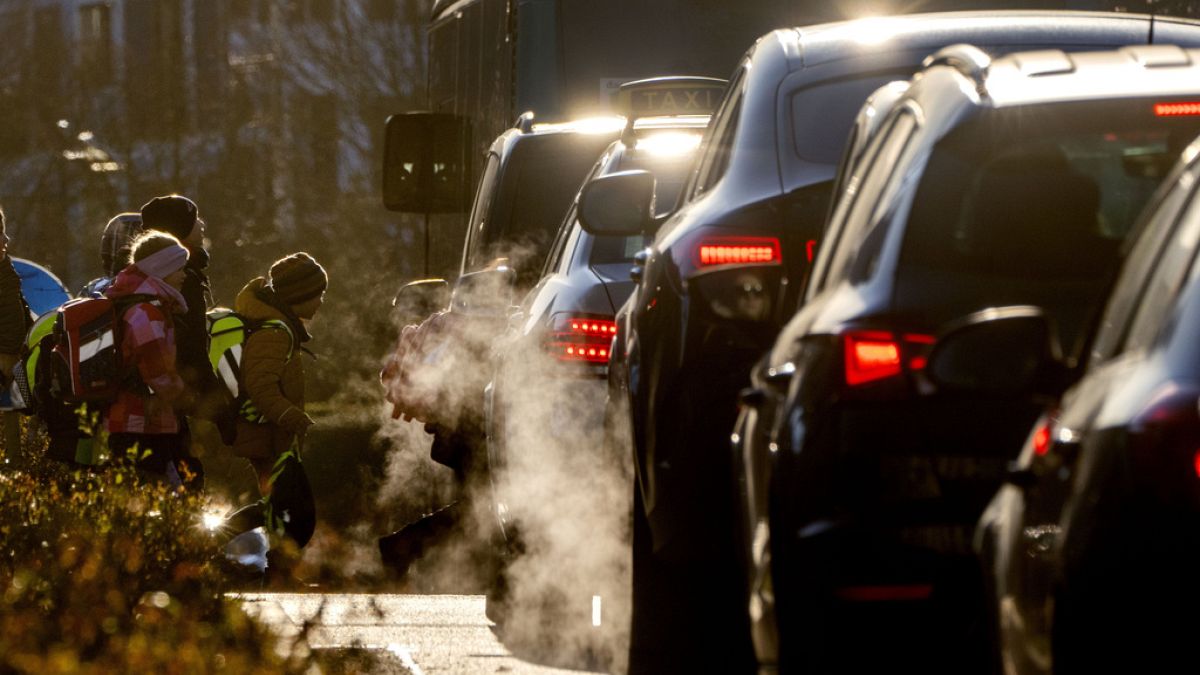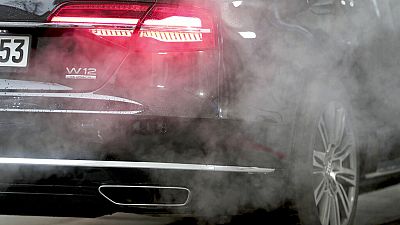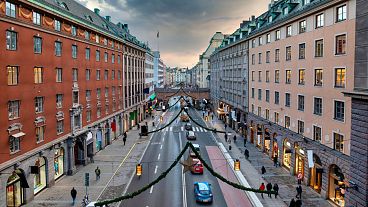Environmental groups blame auto industry lobbying for a freeze in limits on exhaust pollution, but electric cars are now targeted with restrictions on particulate matter from brakes and tyres.
Tailpipe pollution limits for cars and vans remained unchanged as lawmakers agreed the latest set of EU standards, but the inclusion of harmful particulate matter from brakes and the abrasion of tyres reflects the fact that electric vehicles are by no means pollution free.
Government delegates and MEPs reached a compromise on the Euro 7 regulation in back room talks on Monday evening (18 December), finalising the latest and probably the last iteration in a series of progressively stricter limits on pollutants such as nitrogen oxides (NOx) and sulphur dioxide (SO2) that began in 1992.
Euro 7 regulates emissions levels for vehicles and engines, aiming to decrease air pollutant emissions from road transport, and covers cars, vans, and heavy-duty vehicles.
The European Automobile Manufacturers’ Association (ACEA) had lobbied hard against stricter standards that it argued would be costly, and in any case irrelevant by 2035 when separate legislation requiring zero greenhouse gas emissions would effectively render the internal combustion engine, and hence tailpipe pollutant limits, obsolete.
ACEA director-general Sigrid de Vries welcomed the decision to maintain limits at current levels, but expressed concern over new provisions relating to air pollution linked to the wear on brake pads and tyres on the road. “It is important to note that many of the new provisions bring significant technical and investment challenges at a crucial time in the zero-emission mobility transformation,” de Vries said.
Lucien Mathieu of the green group Transport & Environment in Brussels saw the freeze of Euro 6 limits as an indication that the car lobby was “back in control after a few years in the wilderness following Dieselgate”, a reference to the emissions test cheating scandal that erupted in 2015 and has seen executives convicted on both sides of the Atlantic.
The agreed Euro 7 legislation keeps the limit for NOx emissions at 60 milligrammes per kilometres for petrol cars, and 80mg for diesel, in line with the existing legislation dating back 2014. The European Commission had proposed bringing the limit for diesel down to that of petrol.
But one significant change in the law, which de Vries alluded to, was the introduction into Euro 7 of limits for particulate matter produced by brakes: 7mg per kilometre under standardised testing conditions, with a more stringent 3mg for electric cars that can also use regenerative braking to reduce speed.
The regulation also allows for EU limits, from 2026, on pollution due to the abrasion of tyres, unless an international agreement is struck before then. As well as being a major source of fine particulate matter pollution, which has been linked to numerous respiratory and other health problems, tyres are also one of the main sources of microplastics released into the environment, a form of pollution the EU has committed to reducing by at least 30% by 2030.
Mathias Falkenberg of the Environmental Coalition on Standards (ECOS), an NGO, said the Euro 7 standards could help to achieve this goal, but warned the regulation would not be enough on its own. “However, without complementary policies to address vehicles becoming larger, heavier, and more numerous, improved tyres will not be sufficient and the overall rate of tyre shedding will continue to rise,” he said.
Exhaust pollution limits for buses and lorries were tightened under a parallel political agreement on the ‘Euro VII’ standards that apply to heavy duty vehicles.



